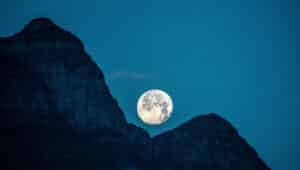WELCOME TO the April night sky. This is the month when we lose sight of the winter constellations in the west, such as Orion and Taurus, and replace them in the east and south with the spring constellations, such as Leo and Virgo.
From a dark sky site, you can now see that the Milky Way runs along the western horizon in the evening, allowing you to view the sky away from the plane of our galaxy and to see out into ‘deep space’, where our universe has hundreds of thousands of millions of other galaxies.
Through the telescope, these massive star systems of billion of suns appear simply as faint smudges of light against the night sky. This is because of the huge distances involved, as the galaxies of our universe can be separated by many millions of light years.
Practically overhead in the evening, we have the constellation of Ursa Major, or the Great Bear. This is a grouping of seven bright stars, with the last two helping to point the way to the Pole Star.
Yesterday (April 6), the Moon was close to Saturn and, by April 15, the Moon will have moved across the night sky to be close to Jupiter. The Moon is at First Quarter on April 5, Full on April 13, Last Quarter on April 21 and New on April 27.
• Clive Jackson is the director of the Astronomical Observatory of Tavira (Sítio do Malhão) and the Camera Obscura (next to the Castle in Tavira), specialising in education and public outreach. Tel 281 321 754, Fax 281 324 688, e-mail cdepa@mail.telepac.pt – visit www.cdepa.pt

























